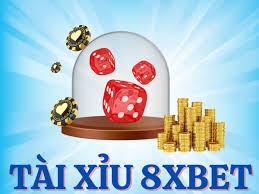Delve into the captivating world of traditional gambling games with a focus on Understanding Tài xỉu: The Classic Dice-Based Concept. This fascinating game combines luck, strategy, and a bit of psychology, offering players an engaging experience rooted in centuries-old cultural practices. Whether you’re a casino enthusiast or simply curious about ancient game mechanics, mastering this concept can enhance your appreciation for Asian gambling traditions and help you develop better strategies for playing and betting.
In this article, we will explore how to use Understanding Tai Xiu: The Classic Dice-Based Concept, examine practical examples, compare it with similar games, and offer valuable advice for beginners and seasoned players alike. From the rules to advanced tactics, gain a comprehensive insight into this timeless game.
The Origins and Cultural Significance of Tai Xiu in Gambling Traditions
Understanding Tai Xiu is more than just comprehending a game — it involves appreciating its historical and cultural roots that have persisted through generations.
Historically, Tai Xiu originated from Chinese society thousands of years ago, where it was deeply intertwined with traditional festivals and social gatherings. Its simplicity and reliance on chance made it accessible to all social classes, from emperors to common folk. The game’s popularity spread across Southeast Asia, often serving as both entertainment and a means of community bonding.
Culturally, Tai Xiu signifies more than just luck; it embodies notions of balance, fate, and harmony within the universe. In many Asian countries, the game is played during Lunar New Year celebrations, symbolizing prosperity and good fortune. Its straightforward rules make it a perfect pastime that reflects the local heritage of trust in destiny, and understanding Tai Xiu now offers more than just insight into a game — it provides a glimpse into traditional values and societal customs.
The evolution of Tai Xiu over centuries
Throughout the centuries, Tai Xiu has evolved from informal street gambling to a regulated casino game, adapting its format to modern gaming technology. Originally played with simple objects like coins or shells, the game transitioned into using dice, which offered a more random and statistically quantifiable outcome.
Today, digital platforms and online casinos have brought Tai Xiu into the virtual realm, making it accessible worldwide. Despite technological advancements, the fundamental principles of Understanding Tai Xiu: The Classic Dice-Based Concept have remained unchanged — the core idea of predicting a total sum of dice and betting accordingly. This evolution highlights the game’s resilience and enduring appeal, rooted in its straightforward yet strategic nature. For players seeking to grasp traditional methods, it is crucial to study its foundational rules and cultural implications, which continue to influence modern adaptations.
How cultural perspectives influence betting strategies
Cultural influences shape how players approach Tai Xiu, especially when it comes to betting patterns and psychological tactics. In many Asian cultures, players tend to follow superstitions, such as betting based on lucky numbers or symbols, which influences their decision-making process.
Understanding Tai Xiu means recognizing that many players combine statistical analysis with these cultural biases, creating a distinctive betting environment. For example, some players might bet heavily on certain outcomes believed to bring luck, regardless of the mathematical probabilities. This mixture of superstition and rational calculation makes the game uniquely complex and fascinating. Developing an awareness of these cultural nuances can help players better anticipate others’ moves and adapt their strategies accordingly.
How to Use Understanding Tai Xiu: The Classic Dice-Based Concept for Better Gameplay
successfully applying Understanding Tai Xiu: The Classic Dice-Based Concept involves not just knowing the rules but also integrating them into strategic practice.
This section explores practical steps that beginners and experienced players can take to enhance their gameplay by applying core principles of the game. From placing bets to analyzing outcomes, understanding the core concepts allows more informed decision-making and improves your chances of winning over time.
Mastering the basic rules for strategic betting
The foundation of understanding Tai Xiu depends on mastering its rules, which revolve around betting on two possible outcomes: Tai (big) or Xiu (small). The game involves rolling three six-sided dice, and players predict whether the total sum will be above or below a specific threshold, typically 11 or 10.
By grasping these basic rules clearly, players can develop strategic betting habits. For example, recognizing that certain totals are more probable based on dice statistics allows for more calculated bets. Accurate knowledge of the probability distribution across possible sums in Tai Xiu gives players an edge — whether they bet on high or low, knowing when to hold or fold is crucial in maintaining a consistent winning strategy.
Utilizing statistical probabilities and patterns
Understanding Tai Xiu extends beyond memorizing rules — it demands interpreting the statistical probabilities underlying dice outcomes. Players who study the likelihood of specific sums occurring after multiple rounds can identify patterns or streaks to inform future bets.
Some seasoned gamblers observe that certain outcomes, such as specific totals or sequences, tend to appear more frequently within a series of rolls. By tracking these patterns, players can adjust their stakes accordingly, whether by increasing bets during favorable streaks or reducing risks after unfavorable ones. Applying probabilistic reasoning in conjunction with traditional gameplay can significantly improve success rates.
Incorporating psychological tactics and cultural intuition
An advanced understanding of Tai Xiu involves acknowledging the psychological and cultural factors influencing both your own choices and those of other players. Recognizing superstitions, betting biases, or emotional triggers can help you develop better strategies to exploit or counteract opponents’ tendencies.
For example, some players might avoid betting on “unlucky” numbers, while others might bet heavily on certain outcomes because of cultural symbolism. Incorporating this insight, combined with statistical analysis, creates a nuanced gameplay approach. Staying calm and analytical, even during streaks or downturns, can help mitigate emotional decisions and keep your strategy aligned with logical principles rooted in the game’s classic design.
Comparing Tai Xiu with Similar Dice-Based Games
To truly understand Tai Xiu is to see how it fits within the broader landscape of dice games worldwide. Comparing it with similar concepts reveals unique attributes and strategic differences.
Similarities with other traditional dice games
Many cultures have their own variations of dice games, like the Western game of Sic Bo or the ancient Indian game of Gyan Chaupar. All these games share core mechanics — predicting the sum of dice rolls and placing bets based on probable outcomes. The fundamental concept of Understanding Tai Xiu: The Classic Dice-Based Concept involves incorporating probability, psychology, and cultural beliefs to optimize gameplay.
For example, Sic Bo, which shares many similarities with Tai Xiu, involves multiple betting options, including specific doubles or triples, alongside the total sum bets. While the mechanics are similar, the rules and betting options often differ, offering players diverse strategic opportunities.
Influences from modern gambling strategies
In contemporary settings, both traditional and digital, players increasingly use data analysis and pattern recognition similar to what is employed in computer-aided gambling strategies. Understanding Tai Xiu’s core principles makes it easier to adapt and apply these insights to other dice games with structured betting options.
Many online platforms also introduce side bets and variations inspired by traditional games, blending classical concepts with modern innovations. Comparing Tai Xiu with these adaptations helps players develop adaptable strategies, leveraging core probability insights alongside intuitive cultural considerations.
Lessons learned from comparative analysis
A comprehensive comparison between Tai Xiu and other dice games highlights key points: the importance of probability assessment, cultural influences, and psychological tactics. Recognizing how these elements interplay across different games provides a broader perspective on strategic gambling.
By studying the similarities and differences, players can refine their approach, adopting best practices from each game type. This cross-pollination of ideas enhances understanding and improves skill, whether in traditional settings or digital environments. It underscores the enduring relevance of Understanding Tai Xiu: The Classic Dice-Based Concept as a foundational knowledge that transcends individual game variations.
Conclusion
Mastering Understanding Tai Xiu taixiuonline.football: The Classic Dice-Based Concept offers invaluable insights into a captivating combination of luck, probability, and cultural tradition. As a game rooted in history, it exemplifies how simple mechanics—predicting dice sums—can create complex and engaging gameplay enriched by psychological and cultural layers. Whether you aim to develop your own betting strategies, appreciate its historical significance, or compare it to other games, understanding Tai Xiu provides a comprehensive foundation for both recreational and strategic play. Embracing this classic concept not only enhances your gaming experience but also deepens your recognition of rich cultural traditions that have stood the test of time.



